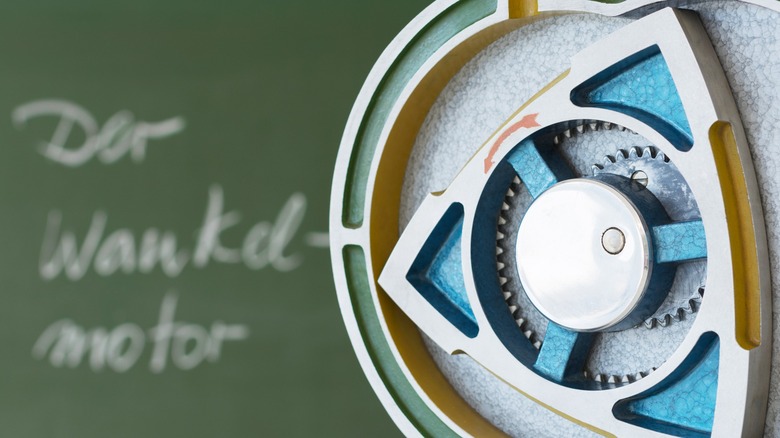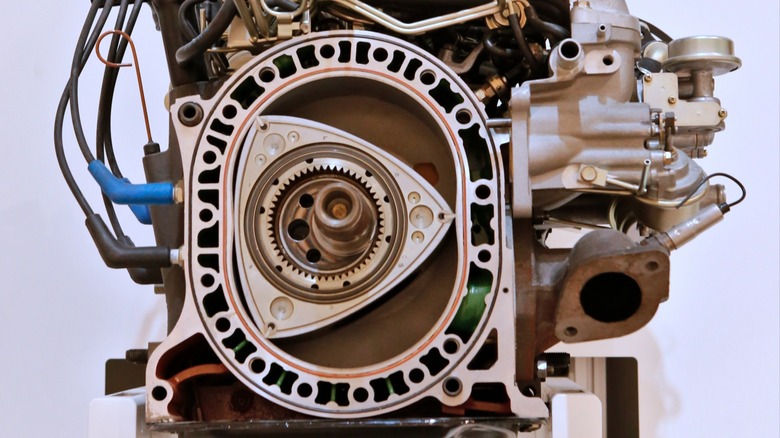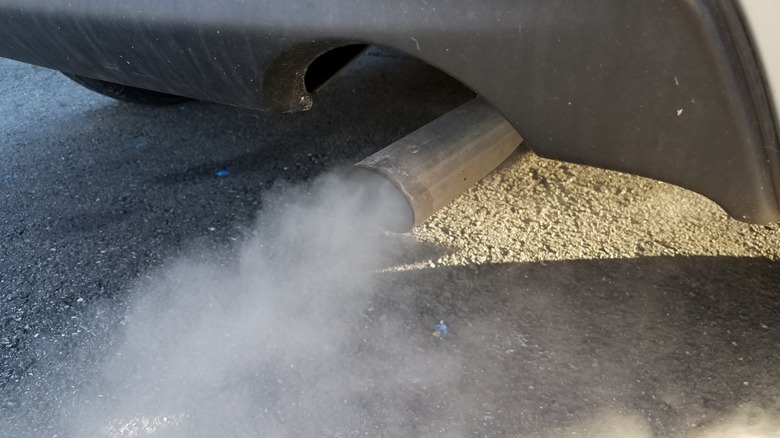Rotary Engine Apex Seals: What They Do, And Why They Get A Bad Rap
A German engineer, Felix Wankel, is credited with developing the world's first rotary engine in the 1950s. Wankel rotary engines use a triangular rotor spinning in a semi-oval case on an eccentric shaft, unlike piston engines from the period. Apex seals in a Wankel rotary engine perform a similar function as piston rings in internal combustion piston engines. However, the weak link of the Wankel engine could lie with the apex seal.
The Wankel rotary engine found success in the automotive market. American automakers, including AMC, Ford, and General Motors, expressed interest in using Wankel engine designs. However, only a few car companies, such as NSU Motorenwerke, Mazda, Mercedes-Benz, Chevrolet, and Citroen, used the engine in meaningful prototypes or production models.
In the United States, if you want to own a car powered by a Wankel rotary engine, there are two older Mazda sports car models to consider. Mazda produced the two-seat RX-7 from 1978 to 2002 but stopped selling it in the U.S. in 1995. Mazda followed up with the RX-8 in 2003, with production continuing into 2012. Mazda's MX-30 PHEV is a more modern option, which uses a rotary engine as a range extender to charge the EV battery on the go.
What do Apex seals do?
As its name implies, the apex seal sits at the apex, or tip, of the Wankel rotary engine's triangular rotor. As the rotor spins on the engine's eccentric shaft, each of the triangle's three apexes maintains contact with the inside of the case's semi-oval chamber.
The seal between the spinning rotor's apexes and the case is essential to engine operation in three ways. First, it creates a vacuum that pulls fresh fuel/air mixture into the chamber. As the rotor advances through the combustion cycle, the mixture compresses and combusts with the ignition spark. At this point, the apex seals receive their greatest test. Finally, the apex seals sweep the exhaust gasses from the chamber before beginning the cycle over again. Poor sealing at any stage of the process degrades engine performance.
Traditionally, apex seal manufacturers employed a variety of materials ranging from cast iron to fiber-reinforced ceramics with varying degrees of success. Engineers continue searching for a material that balances wear resistance with optimum combustion chamber sealing.
Why do Apex seals get a bad rap?
Early apex seal designs and materials often failed sooner than piston rings in conventional piston engines. With apex seals' shape and material composition evolving, continued advancements could result in the engine's resurgence. That's good news for lightweight production sports car enthusiasts as rotary engines provide comparable horsepower in a smaller, lighter-weight package than conventional piston engines. However, without improvement, the rotary's short-lived apex seals will continue to get a bad rap.
Loss of compression is a common symptom of failed apex seals. As apex seals wear down, they can no longer create an effective seal against the chamber wall. This allows pressure to escape during the engine's compression and power cycles. Unlike piston engines that receive lubrication from the crankcase, rotary engine rotors and apex seals do not receive lubrication other than what's provided by the fuel.
There are reports of Mazda RX-8s from the mid-2000s with excessive oil consumption within the first 27,000 miles and engine failure under 100,000 miles. That lack of longevity leaves much to be desired from the last car to use the rotary engine.


